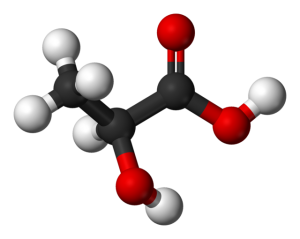
Lactate is the ultimate form of the anaerobic breakdown of glucose.
This reaction occurs when tissue lacking oxygen.
Blood lactate therefore increases in all severe hypoxia.
Lactate ions are used for gluconeogenesis. Any reduction of the latter (any abnormal glycogen storage) also increases blood lactate.
Indications:
• Search of lactic acidosis before metabolic acidosis, including diabetic.
• Confirmation of hepatic glycogen storage disease in infants.
Sample:
Take in a fasted state, at rest, as lactate increases after muscular effort and after meals.
Arterial (like blood gases), or possibly venipuncture without tourniquet tube containing an inhibitor of erythrocyte glycolysis (as glucose).
Immediate transport to the laboratory on ice for immediate assay.
Typical values:
Adults:
• Arterial blood:
<90 mg / L (1 mmol / L)
• Venous blood:
50 to 180 mg / L (0.5 to 2 mmol / L)
Conversion Factors
mg × 0.011 = mmol
mmol × 90.1 = mg
Interpretation:
Hyperlactatemia may be due to acute respiratory failure, prolonged collapse or shock – circumstances in which lactic acidosis is common, but few sought.
Lactic acidosis diabetic:
Hyperlactatemia characterizes diabetic lactic acidosis, which occurs in type II diabetic during a respiratory or renal heart failure. It is suspected in an array with metabolic acidosis polypnea evoking a “diabetic coma” but ketone bodies in urine.
Acidosis is very severe. Blood pH around 7, bicarbonates are <10 mmol / L lactate is> 6 mmol / L.
Plasma lactate> 4 mmol / L is a sign of gravity making reservations life-threatening. Immediately tell the healthcare team.
Liver glycogen storage disease:
In hepatic glycogen storage disease type I or von Gierke disease, blood lactate is increased, and lowered blood sugar.
This condition, inherited as an autosomal recessive trait and caused by a deficiency in glucose-6-phosphatase, is reflected by the age of three or four months by chronic hypoglycemia, growth retardation and hepatomegaly due to accumulation glycogen in the liver.

You must be logged in to post a comment.